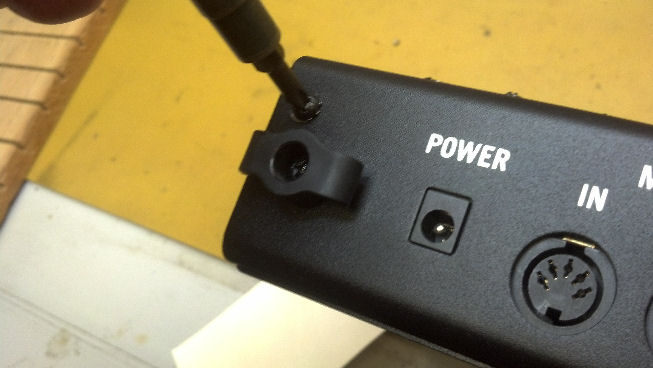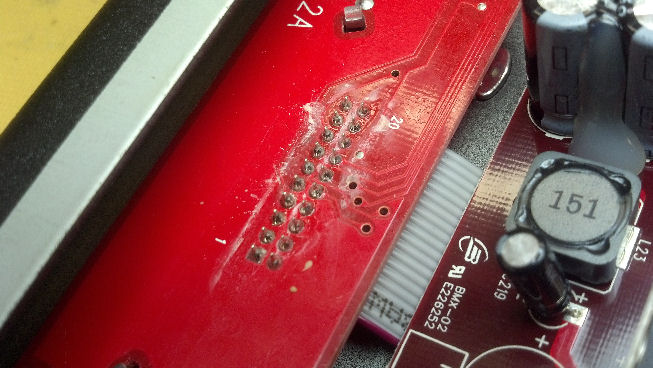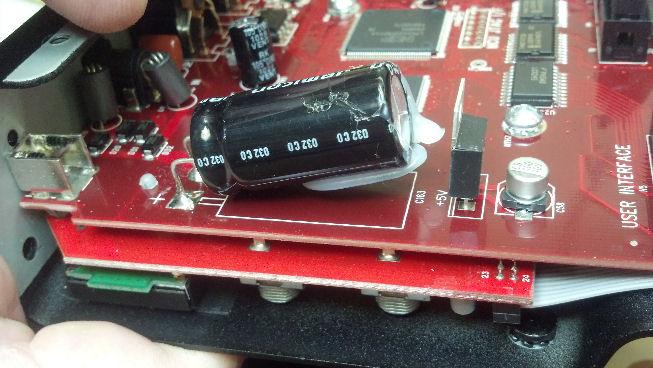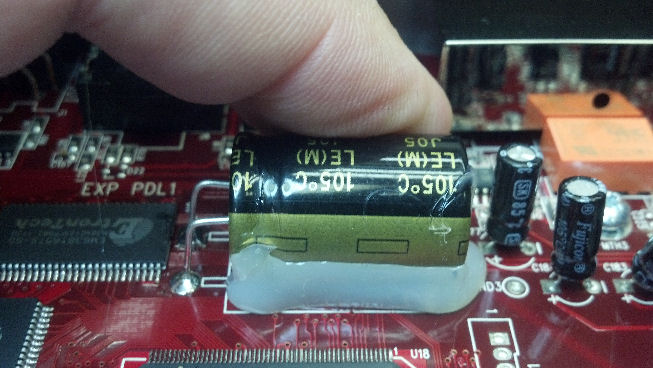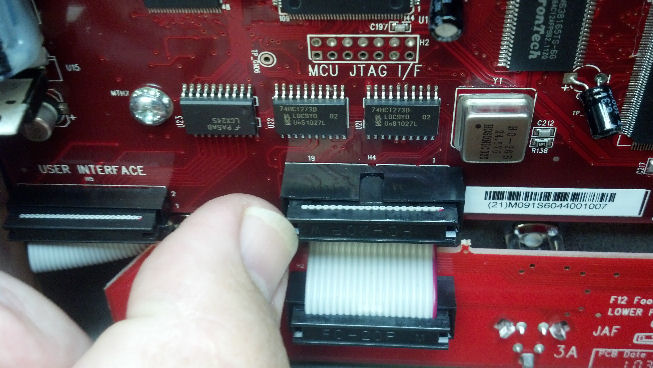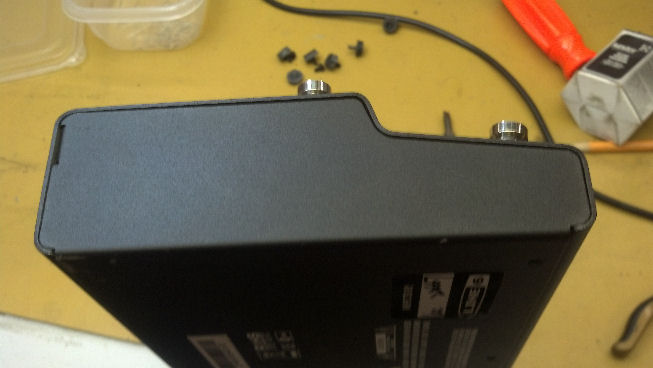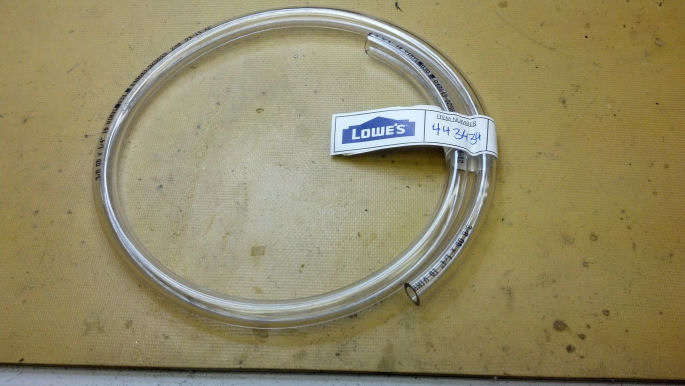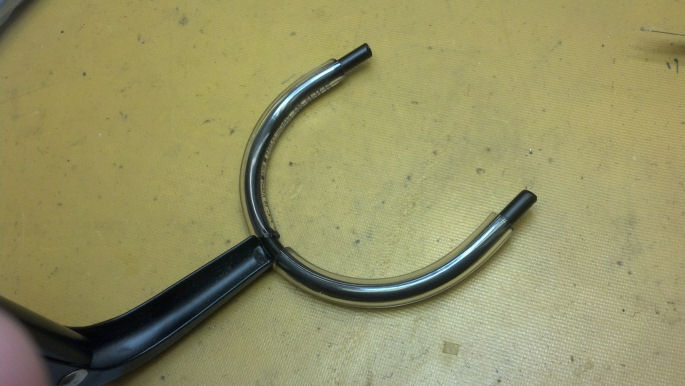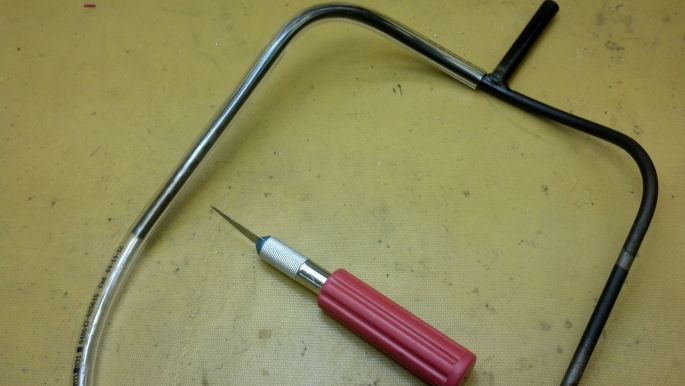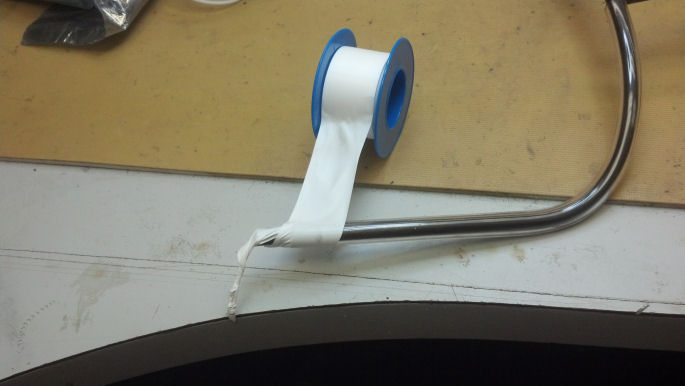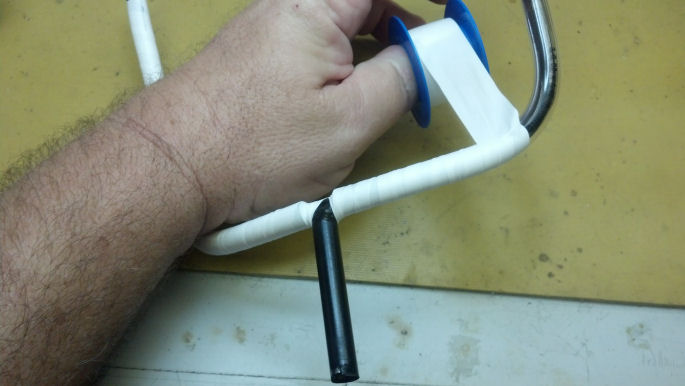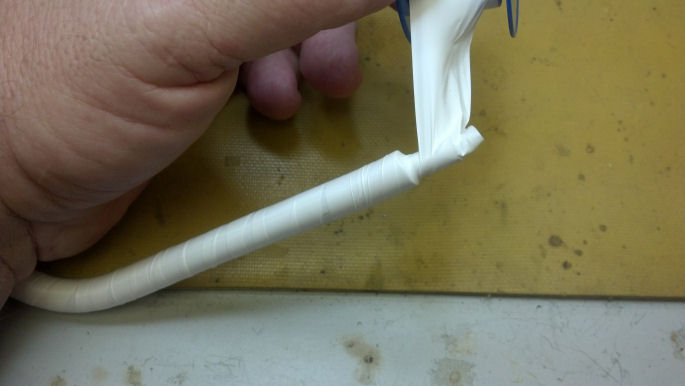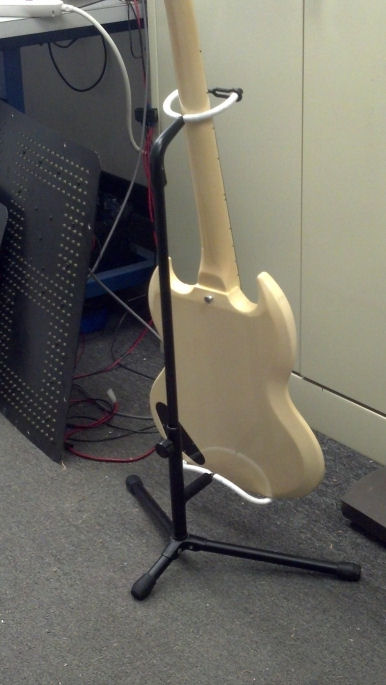
Another well-worn road warrior from Dr. Shoen is on the bench for service. The foam is shot. The on/off switch is always in the ‘on’ position, regardless of what the switch says. The Unbroken String Crew goes to work!

The slide switch is under this cover. I’m using a rag on the desk top to keep the small parts from bouncing away.

When the switch is in the ‘off’ position, the signal line is shorted to ground.

Speaking of small parts bouncing, this sliding contact is supposed to be inside the switch. What’s going on here?

Here is an internal view of the switch wiring cavity. The spring is a flexible conduit of sorts, protecting the wiring that goes up to the head of the microphone to the cartridge itself. The yellow and black wires allow the user to switch off the microphone by grounding the audio signal. Or that’s the way it’s supposed to work.

Had the other ‘pole’ of the switch been soldered, the switch would have appeared to work properly. Hmmm…

In any case, we need to de-solder the switch so that the internals (including that sliding contact in an earlier picture) could be reunited with the rest of the switch, and the wiring will be replaced as we found an intermittent connection due to a broken wire inside the insulation somewhere.

This is a good view of what happens with a double pole, double-throw switch. The pair of sliders work in unison to control two different circuits (double pole) and operate in two possible configurations (double throw.) The folded tent-like structure is a spring which holds the sliding surface against the physical wiring contacts, which are the six metallic squares seen in the part of the switch in the upper right part of the picture.

Putting it back together, we have a better view of how the sliders relate to the physical wiring contacts.

Squeezing the switch together like this compresses those tent-shaped springs. This pre-loads the contacts together to establish good contact.

Quickly, before I lose my grip, I gotta crimp those tabs back down so that the switch is held together again.

All four tabs are down flat, so this switch will be good for another million miles.

Let’s take the rest of the mic body apart now, to do something about the deteriorated foam.

A fine wire brush on the Dremel tool makes short work of the remaining foam. The dark lines are the old adhesive.

The front half of the shell cleaned up pretty well. I’ll set this aside for now.

Here is the microphone capsule in its holder. This all comes out to repair a broken wire as well as replace the windscreen foam on the capsule and the back half of the microphone shell.

The actual microphone capsule is held in the plastic holder with this big aluminum ring.

One of these wires were broken inside the insulation, so the wires will be replaced. This pic was mainly to document which color went to which terminal. I believe that the red magic marker indicates the ‘hot’ audio terminal.

The wire wheel made short work of the remaining foam in the back section of the microphone case.

For decades, technicians have used “Blue Shower” to remove corrosion and dirt from sensitive electronics. Nowadays, more modern products have come to the market, and this is one. But I still keep my last can of Blue Shower in the chemical cabinet for those times when I need the Good Stuff!

Rather than spray the whole microphone with cleaner, I sprayed some into the cap, then will brush it onto the places that I want to clean up.

And this is my brush. This brand of cleaner is a pale orange.

This is a good shot of the cleaner doing its work. Compare the uncleaned pin in the background with the pins in the foreground that have already been cleaned. And look at the junk on the swab!

The microphone is getting a new wire harness. This is the back side of the connector in the previous picture.

To pull the wire harness and the protective spring through the rear shell, I’m using this old guitar B string.

This is a glimpse of the B string and the wire harness moving up through the body of the microphone.

The wires to the microphone capsule are blue, yellow, and black. The switch is wired with yellow and black.

The microphone connector is now fastened into its pocket in the bottom of the body.

Now that the microphone connector is secured, the internal spring can be tensioned and its end secured under the set screw shown here.

Our switch can be wired up and put back where it belongs. This time, I’m using both sections of the switch.

The foam on the microphone capsule is completely gone. A small round piece of foam will be glued here.

Not perfectly round, but who will know besides you and I?

This foam comes in large sheets. Here, I’m fitting a small piece of the foam in the rear shell.

This is what it will look like from the outside. Now we’re getting somewhere!

Trim the foam to fit. No rocket science here!

The rear shell foam is ready to be cemented into the shell.

The same approach will be used to pre-fit the foam piece that will be cemented inside the front shell.

This aerosol can is what my mother-in-law would call a ‘Free Methodist’ spray can. It sprays adhesive everywhere. To keep the application of cement under control, I’ll repeat the applicator trick that I used to clean up the microphone connector, and use an applicator to put the adhesive right where I want it.

Here, I’m using a disposable paint touch-up brush to apply the cement to the inside of the front shell along the same lines used at the factory.

This is starting to look like a microphone again! This is the front shell.

By controlling the application of the adhesive, I didn’t have to worry about removing a bunch of over-spray.

This is a rubber plug that serves as a strain relief at the point where the internal wiring enters the plastic shell holding the microphone capsule.

This is about the final resting place of the rubber plug. Now we can trim the rest of the wiring to length and solder to the microphone capsule.

The wires are soldered and we’re re-assembling the plastic shell supporting the microphone.

The body of the microphone is almost complete.

Four more screws to reattach the front shell, and we’re done! Dr. Shoen loves the aesthetics of this microphone, don’t you?
Thanks for reading all the way to the bottom. This was another long post, and I hope you see the attention to detail that the Unbroken String Crew can apply to your repair or restoration project.
Contact Info : David Latchaw EE
281-636-8626































































